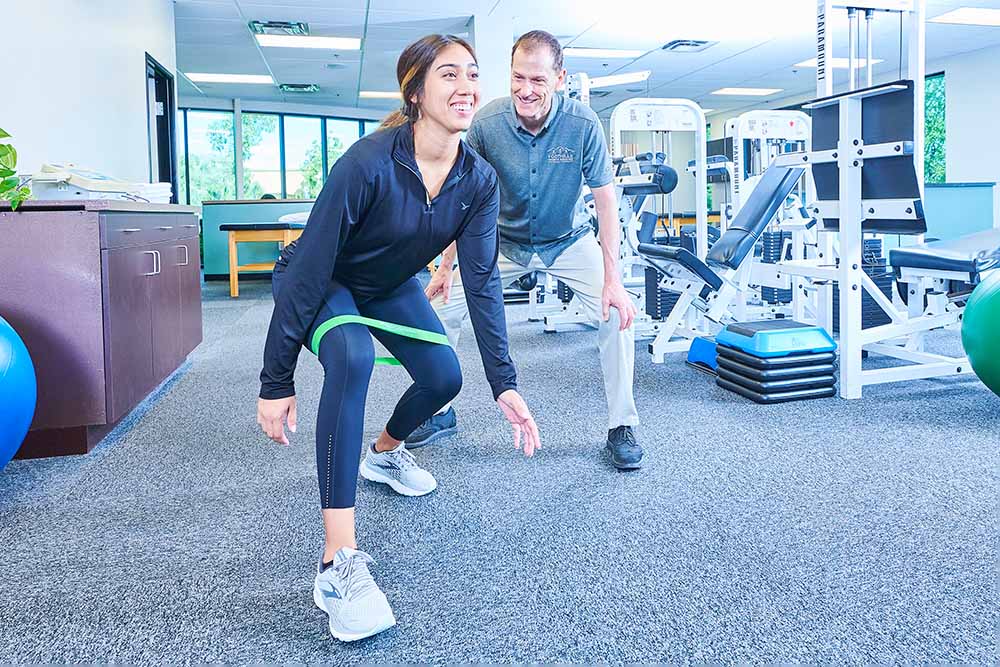The Role Of A Sports Physical Therapist In Athlete Recovery And Performance

Sports physical therapy is a specialized field dedicated to optimizing athlete performance, aiding recovery, and preventing injuries. Sports physical therapists, or SPTs, are crucial to helping athletes maintain their optimal level of physical fitness. From professional players to weekend warriors, the expertise of these specialists ensures that individuals can perform at their best while minimizing the risk of setbacks.
Recovery: A Focus On Healing
Injuries are an inevitable part of sports, whether they stem from overuse, accidents, or sudden impact. When athletes face an injury, the priority is a swift yet safe recovery to get them back in the game. Sports physical therapists are at the forefront of this process, developing tailored rehabilitation programs that address the specific needs of each individual.
Exercises and methods that encourage healing, regain range of motion, and strengthen afflicted areas are frequently included in rehabilitation plans. These are not generic routines but carefully crafted strategies based on the type and severity of the injury. For example, a sprained ankle in a soccer player demands a different approach than a torn ligament in a basketball player. SPTs use their in-depth understanding of biomechanics to ensure every exercise serves a purpose, aligning with the athlete’s sport-specific requirements.
Beyond physical techniques, sports physical therapist provides emotional support. Injuries can be mentally taxing, and athletes often struggle with the frustration of being sidelined. By maintaining open communication and setting realistic goals, SPTs help foster a positive outlook during the recovery journey.
Enhancing Performance: More Than Injury Prevention
While recovery is a critical aspect of a sports physical therapist’s job, their role extends far beyond treating injuries. These professionals are instrumental in enhancing athletic performance through targeted interventions. By assessing an athlete’s movement patterns, muscle imbalances, and flexibility, SPTs identify areas for improvement that may not be immediately obvious.
For example, a runner experiencing recurring knee pain might unknowingly have weak hip muscles. By addressing the underlying issue, a sports physical therapist not only alleviates pain but also improves the runner’s stride, boosting overall performance. Similarly, swimmers with shoulder discomfort can benefit from techniques that enhance joint stability, enabling smoother and more efficient strokes.
Read more : The Rise of Celebrity Podcasts and YouTube Channels
Strength training, flexibility exercises, and sport-specific drills are often incorporated into performance enhancement plans. These programs are designed to optimize the body’s mechanics, allowing athletes to achieve higher levels of efficiency and endurance.
The Science Behind Recovery And Performance
The use of evidence-based methods is one of the main characteristics that distinguish sports physical therapists. Advances in sports medicine and rehabilitation science have equipped SPTs with tools and techniques to address even the most complex injuries. Modalities such as dry needling, myofascial release, and joint mobilization are commonly used to reduce pain and accelerate healing.
Additionally, cutting-edge technologies like biomechanical assessments and motion capture systems help SPTs analyze how athletes move. These realizations enable the development of initiatives that not only deal with present problems but also shield people from harm in the future. Prevention is a cornerstone of sports physical therapy, as a proactive approach can save athletes from the physical and emotional toll of recurring injuries.
Collaboration With Coaches And Trainers
Sports physical therapists rarely work in isolation. Their success often depends on collaboration with other professionals, including coaches, athletic trainers, and sports physicians. This interdisciplinary approach ensures that athletes receive comprehensive care tailored to their specific needs.
For instance, an SPT might work with a coach to modify training regimens during an athlete’s recovery period. By doing so, they ensure that the athlete can maintain fitness without compromising the healing process. Similarly, ongoing communication with athletic trainers helps monitor progress and adjust rehabilitation plans as necessary.
A Lifelong Impact
The influence of sports physical therapists goes beyond an athlete’s active years. The techniques and habits instilled by SPTs often carry over into everyday life, promoting long-term health and well-being. Athletes who learn proper movement patterns, strength-building exercises, and injury-prevention strategies during their careers often experience fewer physical issues later in life.
Moreover, sports physical therapy isn’t limited to elite athletes. Recreational players, fitness enthusiasts, and even individuals recovering from surgeries benefit from the expertise of these professionals. The adaptability of sports physical therapy ensures that it remains relevant across different stages of life and levels of physical activity.
Conclusion
A sports physical therapist’s job is complex, combining knowledge, compassion, and science to help players at all levels. Whether aiding recovery, enhancing performance, or preventing injuries, these professionals are an indispensable part of an athlete’s journey. By addressing physical challenges and fostering resilience, sports physical therapists empower athletes to push boundaries, achieve goals, and maintain a lifetime of physical activity. In a world where the demands of sports continue to grow, their contribution is more valuable than ever.






